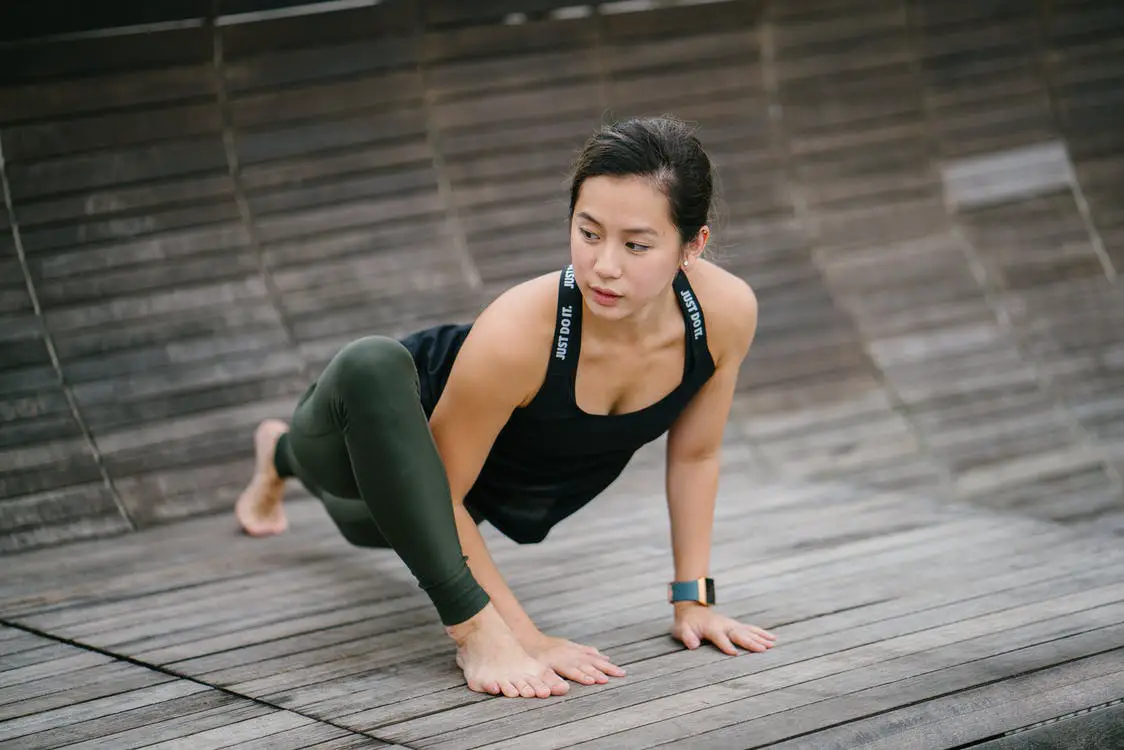![How To Deal With Sensory Overload [9 Tips For Overstimulation]](https://happyrubin.com/wp-content/uploads/2019/12/ik-ben-overprikkeld-150x150.jpg)
How to Meditate? 23 Meditation-Tips & Exercises [Learn to Meditate]
![How to Meditate? 23 Meditation-Tips & Exercises [Learn to Meditate]](https://happyrubin.com/wp-content/uploads/2018/12/meditatie-tips-hoe.jpg)
How should you meditate? In other words: how can you learn to meditate and what are the best tips? Here you will find useful meditation tips and exercises . Read more…
Contents of this page:
Tip 1 – How should you meditate? Just go and do it, because that’s how you learn the most!
How exactly should you meditate?
- Here you will find a simple step-by-step plan for beginners.
- In addition, use these 84 mindfulness exercises
- And use these 20+ guided meditation texts including explanations for meditation.
This is the most important thing: just do it , even if it’s one second. Just sit down and do nothing else. One conscious second is worth more than a whole week of ‘meditation’ without actually meaning it.
Tip 2 – Keep a smile while meditating
Notice how much easier it is when you smile. For example when you notice that you are distracted with your thoughts. Then smile at the thought. Or if you feel uncomfortable. Smile at it with a ‘Buddha smile’.
Tip 3 – Does it not work (yet)? Then you haven’t really tried it for a few months
Have you tried meditation and / or mindfulness a number of times and it doesn’t work for you (yet)? Then I have news for you …
A lot of people sit for a few minutes to meditate, for a few days, and then complain that they can’t do it, that it doesn’t work, or that it’s not for them …
The answer for you then is: only judge after you have done it thoroughly. Can’t sit still? Even then the answer is always: you have not really tested it intensively for several weeks . Just do it for a few weeks and you will see that you will naturally calm down.
Tip 4 – Give it a serious shot, even though it can be challenging at times

Keep going. You will sometimes find the exercises stupid or a waste of your time. Sometimes you will not have time to do exercises. You can also run into yourself.
Mindfulness / meditation is essentially very simple, yet it can be tricky to implement. In that case, hold on until you’ve tested it really well!
Are you doing Mindfulness training? Follow the steps of the curriculum. It is a proven program. Think of it as an experiment and finish the experiment. Only judge at the end what it has brought you.
Have patience. There will be ups and downs. It takes time and a lot of patience. You are basically learning a skill, and it can take a long time, even if an exercise is very short. It is different per person. Give yourself time.
Tip 5 – Also (correct!) Action is meditation: do you get the urge to do something? Feel free to do that!
Action = meditation. This applies, for example, to performing good acts of service , such as random acts or kindness. But that also applies to anything else that you are inspired to.
Meditation without action is very pointless.
If during your meditation you suddenly get the inspiration to backup all your family photos, feel free to interrupt your meditation, start the backup process and then return for another meditation if necessary.
Meditation inspires action.
At that moment the meditation has served its purpose: putting you into action. And in the end that is really the reason to meditate, because meditation without action is extremely meaningless.
Action without love and love without action are both wasted effort.
Tip 6 – Too often ignored: to meditate is to pay attention to the inner nature of who you are
As you can read in this article about mindfulness, the spiritual aspect of meditation and mindfulness is often ignored in the West. It is presented “as down to earth as possible” as ” attention training ” or ” brain training .”
You can of course just use meditation and mindfulness as ‘attention training’ or ‘brain training.’ However, feel welcome to include the spiritual aspect as well. Meditation and mindfulness revolve around the experience of being alive! The fake idea of who you are has to go. That is meditation.
And how do you do that? You will learn that in the next tip about ‘mere awareness’, or ‘nothingness’ (because that is who you really are) …
Tip 7 – Understand the importance of ‘nothingness’, silence and space (mere awareness)

With mindfulness you are often mainly focused on an object that you are working on. This is an excellent exercise to calm your mind.
However, the main reason why you focus on an object is to subsequently identify yourself with the space in which the object resides. That’s an important aspect of meditation: no-self. No thoughts.
If you can get quiet, you will know everything you really need to know. The answer will come from that silence and tranquility. The answer to all essential questions is already within you. By the way, that’s not the answer for non-essential questions.
And you do not do that by trying to think about nothing (pink elephant effect) but by witnessing those objects (sounds, feelings, emotions, breathing, etc.) without having a story to tell. Without asking: ‘What kind of sound is that, the light is on, maybe I should turn that off, who does that, what is the movement, who is the movement, who could get it …’
Let the sound (the object) be there, witness it without thought and allow it to pass. Be a sensory witness to everything that passes by. It comes and goes again. You are the only thing that is constant: the intelligence, wisdom, tranquility, calm and peace that we could call pure consciousness. In this way you shift your consciousness, you rise, as it were, from your body and you are in connection with something higher (pure consciousness).
Listen to the silence, because then you too will become silent.
So read the article on consciousness . That is the state you strive for in meditation. As a result you realize the importance of nothingness, silence and space.
Tip 8 – Let go of all your knowledge …
Don’t try to picture that silent observer – who you really are – as something you already know. Let all your knowledge, thoughts and images pass into silence and nothingness and just discover that the spectator is already in that silence.
Tip 9 – This is the most ‘handy’ object to observe as a witness …

There are many objects in space, such as sounds, feelings, emotions, breathing, etc. but the most powerful and easy object is your breathing . Breathe in and out a little longer than usual. Four to five seconds. Take a deep breath in and out…
Tip 10 – Put your hands in a receptive position, sit upright and sit respectfully
Check for yourself how you can improve your posture in the following ways:
- Put your hands in a receptive mode, so palms up.
- It is also important to sit respectfully, as you are ‘receiving visits’ from your higher self (pure consciousness).
- Keep your back straight. Think of this as a ‘channel’ upwards to connect you.
Tip 11 – Meditation is the goal / outcome, not the process

Meditation is something you can do right now … and then you are already there. There is no process involved. For example, it is not a process to get to a stress-free feeling. You’re just there in a millisecond.
Then why does it take so long (sometimes up to 8 years) for people to give up their stress? This is not because meditation is a process, but because they wait 8 years and hold themselves back until they completely surrender themselves to the meditative feeling.
You can actually give in to the meditative feeling immediately. And then you are already there!
But we’re so goal-oriented … which puts us in the trap of believing that meditation and mindfulness are also means to an end. Many people only want that goal, not the process. Make the process the goal!
If you want flowers in your garden, you arrange soil, water, sunlight … All these things don’t look like flowers at all. But if you take care of all those things, flowers will be the result. But many people want the result, not the process.
Tip 12 – Know the paradox: You reach the meditation state immediately and you continue to develop it throughout your life …
On the one hand, you just reach the meditative state directly in the here-and-now by meditating …
On the other hand, the feeling of meditation cannot be learned in a few minutes, or rather, you have to keep developing yourself meditatively throughout your life. Keep your spiritual development as a leitmotif through your life by continuing to meditate.
Learning the alphabet took you 3 years. And to make sentences and to write better and better: 10-15 years. But to learn something about the true nature of yourself, you want to learn in 2 minutes, why do you want to cheat that?
– Sadhguru
Tip 13 – Use hypnosis & visualization if necessary

Consider using hypnosis to support your meditation. For example, if you do a meditation where you make contact with your heart, you can do a visualization to sink straight into that perfect place in the center of your heart where everything is ‘aligned’ with God. Where everything is perfectly peaceful. That vibration in the center of your heart is so strong, so peaceful!
Or, for example, visualize a vortex of water draining into a small bowl, round and round and round, until it finally gets to that point where it just falls in. And let your attention follow that to the center of your heart.
Tip 14 – Bring your mindful, loving, peaceful, alert attitude into your day
Let the whole world be your meditation classroom. It is easy to be mindful and aware in formal Yoga or meditation moments. The real lesson, though, is to ‘be here now’ when you’re late for work, take the stairs down to catch the metro, and greet your cashier. The whole world is our classroom, especially the moments we enjoy the least.
Bring your prayer and mindfulness through the day. Don’t leave it in your room. Simply state the intention for this and it will happen.
Eckhart Tolle does not necessarily meditate, but is simply constantly present.
Another way to bring the meditative feeling into your day is through mini prayers and mini meditations. For example, just focus on your heart, the angels or your breath during, before or after lunch.
We have to breathe. So between now and lunch – and between lunch and dinner – you can do a mini meditation on your breath in seconds. Just breathe a little slower and deeper than normal. Four or five seconds – and you’re done. In this article with mindfulness exercises you will find several mini meditations.
Tip 15 – Memorize spiritual texts: this automatically helps you when you are unconscious
Memorize quotes, mantras, Bible texts, the words you have read … Say them out loud. In times of judgment, for example, you will automatically correct your behavior. That is the power of the creative words of God.
Tip 16 – Stay with yourself: don’t compare yourself to others

Don’t compare yourself to others. Only look at your own growth. Whatever others do, whatever successes they achieve (or fail to achieve), however fast they go … You do it at your own pace. It’s good to learn from each other, but only compare yourself to how you were yesterday.
Tip 17 – Give yourself a breath injection
That breathing is not only a useful object, it is also a very pleasant means! Breathe in and out very deeply and for a long time. That way you get a lot of oxygen. You feel high then! The alternating nostril breathing is very suitable for this.
Tip 18 – Feel like a child experiencing everything for the first time
Always have a fresh perspective: you experience every moment for the first time. In fact, it is. It may seem like we have experienced things before, but we have never experienced them in this moment. So feel like a child, or like an alien who has arrived on this Earth for the first time and is discovering everything for the first time.
Tip 19 – How can you maintain meditation?
I get it. Meditation takes time and we are all busy. It is difficult to justify spending valuable “doing nothing” when there are so many “important” things to do.
Yet it is completely the other way around: meditation is effortless and actually creates time. You can read how that works in this article about maintaining meditation.
Tip 20 – Have faith
Have faith in yourself and have faith in the signals your body is giving you.
Tip 21 – ‘What do I do if I want to shift during meditation because of discomfort or itching?’

Also notice any unpleasantness and irritation. Give them space. With a smile . Do n’t make any changes. No judgment. Let go of the need to understand them and just observe
You have 2 choices if you have itching or something else that you need to do something about so that it no longer disturbs, such as shifting or scratching.
- Train your mindfulness acceptance and tolerance .
- Sit or scratch, but mindful (so knowing you’re doing it) and with a smile!
Also, focus on and accept your physical distress. Zoom in on the pain. Because of this we also know how comfort and ease feel.
Tip 22 – Test out a simple meditation app
The whole point of meditation is simplicity. Therefore, try out a simple meditation app.
Tip 23 – Watch this video on how to meditate
Watch the video below about meditation:
Final Note: Keep an eye on the purpose of meditation
I close with the essence of meditation: as you read earlier in this article, the object (such as your breath) of your meditation is just the object. The purpose of the meditation is to identify yourself with the space that surrounds the object. The object is an entrance for that.
Once you have attained attention in the here and now through the object, stop viewing meditation as an object. For example, as soon as you feel your breathing in your nose, stop. There is then attention. When you become aware of an object, such as your breath, you can sense who is the witness … the space around it … you!

![5 Best Self Care Tips For College Students [#1 Advice]](https://happyrubin.com/wp-content/uploads/2021/09/the-best-self-care-tips-for-college-students-440x264.jpg)
![How To Stick To New Year’s Resolutions: 9 Tips [Smart & Sure Ways]](https://happyrubin.com/wp-content/uploads/2019/12/tips-voor-goede-voornemens-440x264.jpg)
![How To Stop Being So Hard On Yourself [9 Great Tips]](https://happyrubin.com/wp-content/uploads/2019/12/we-moeten-zoveel-van-onszelf-en-anderen-150x150.jpg)

![19 Best Ice Breaker & Get-To-Know-Eachother Games [Fun & Simple]](https://happyrubin.com/wp-content/uploads/2018/02/leukste-ijsbrekers.jpeg)
![Becoming More Social: 41 Tips [Improving Social Skills] [List]](https://happyrubin.com/wp-content/uploads/2018/06/sociale-vaardigheden1.jpeg)
![How to start a conversation with anyone: 15 tips [Making contact]](https://happyrubin.com/wp-content/uploads/2017/08/gesprekstechnieken1.jpeg)
![372 Friend Tag Q&A Questions [Best Friend Quiz]](https://happyrubin.com/wp-content/uploads/2019/05/best-friend-tag-vragen-voorbeelden.jpg)



![Clingy & controlling behavior of partner/date [Extreme examples]](https://happyrubin.com/wp-content/uploads/2020/06/claimerig-gedrag-van-partner-eigenschappen-en-voorbeelden-150x150.jpg)

![How to recognize if a man is in love [Signals & his body language]](https://happyrubin.com/wp-content/uploads/2020/05/verliefd-gedrag-van-mannen-herkennen-150x150.jpg)


![Free will and religion / theology [Verses & Quotes on free will]](https://happyrubin.com/wp-content/uploads/2020/10/religion-on-free-will-quotes-1050x640-1-150x150.jpg)

![Dealing With Setbacks & Hardship [Lessons & Examples]](https://happyrubin.com/wp-content/uploads/2018/11/omgaan-met-tegenslag-tips-hoe-dan.jpeg)
![NLP Agreement Frame: Use these exact sentences [Examples]](https://happyrubin.com/wp-content/uploads/2020/10/agreement-frame-nlp-1125x640-1-440x264.jpeg)
![122 Best Comebacks In Any Situation [Best Examples]](https://happyrubin.com/wp-content/uploads/2020/06/beste-comebacks-technieken-tips-440x264.jpg)
![Using Hypnosis to Stop Smoking [HowTo]](https://happyrubin.com/wp-content/uploads/2020/05/stoppen-met-roken-door-hypnose-150x150.jpg)
![Presuppositions language pattern: meaning & examples [NLP]](https://happyrubin.com/wp-content/uploads/2020/04/wat-zijn-vooronderstellingen-150x150.jpg)
![Peripheral Vision: Meaning & Exercise [Essential Skill]](https://happyrubin.com/wp-content/uploads/2020/04/perifeer-zicht-trainen-tips-150x150.jpg)

![How To Start A Coaching Business [21 Smart Tips]](https://happyrubin.com/wp-content/uploads/2018/11/coachingpraktijk-starten-tips.jpeg)
![How to make dreams come true? [33 tips to realize dreams 100%]](https://happyrubin.com/wp-content/uploads/2018/05/dromen-mijlpalen.jpeg)
![How To Become Rich? 27 Millionaire Tips [Guaranteed To Work]](https://happyrubin.com/wp-content/uploads/2018/01/hoe-kan-ik-rijk-worden.jpeg)
![77 Best Online Marketing Tools [Recommendations] [Also Free]](https://happyrubin.com/wp-content/uploads/2018/08/beste-onlne-marketing-tools-tips.jpeg)
![Complete List Of Virtues & Qualities [Including Explanation]](https://happyrubin.com/wp-content/uploads/2018/12/kernkwaliteiten-uitleg.jpeg)
![Being Attentive: How Do You Do That? [Meaning & 9 Tips]](https://happyrubin.com/wp-content/uploads/2019/05/attent-zijn.jpg)
![Being Conscientious: Meaning Of This Virtue [Explained]](https://happyrubin.com/wp-content/uploads/2018/07/Consciëntieus-persoon.jpg)


![Best Books About Burn-Out [Top 10] [Update 2025]](https://happyrubin.com/wp-content/uploads/2020/06/beste-boeken-over-burnout-lijst-440x264.jpg)
![Best Self-love Books [Top 10] [Update 2025]](https://happyrubin.com/wp-content/uploads/2020/04/beste-boeken-over-zelfliefde-aanraders-440x264.jpg)
![Life changing books: 10 books that change your life [2025 Update]](https://happyrubin.com/wp-content/uploads/2020/03/levensveranderende-boeken-tips-150x150.jpg)
![Top 10 Best Books: Recommendations Per Genre [2025 Update]](https://happyrubin.com/wp-content/uploads/2019/12/best-books-per-genre-150x150.png)
![Best Books On procrastination: Must Reads [List] [2025 Update]](https://happyrubin.com/wp-content/uploads/2019/11/beste-boeken-over-uitstelgedrag-tips-150x150.jpg)
![Joe Dispenza: Events To Attend [2025 & 2026] [All Info]](https://happyrubin.com/wp-content/uploads/2020/02/joe-dispenxa-events-440x264.png)
![Best Online Study Options [Online Education Top List]](https://happyrubin.com/wp-content/uploads/2019/03/best-home-study-options-440x264.png)
![Teachable Review & Experiences 2025 [Bad Online Training Tool?]](https://happyrubin.com/wp-content/uploads/2020/02/Teachable-review-ervaringen-150x150.png)
![Audible Review, Experiences & Special Discount [Scam?]](https://happyrubin.com/wp-content/uploads/2020/01/audible-review-ervaringen-150x150.png)
![Guest Posts Wanted [Free & Always Directly Accepted]](https://happyrubin.com/wp-content/uploads/2019/05/gastbloggen-regels.jpg)

Thanks for these helpful meditation tips. I am looking into this to better deal with the forced isolation of the home office. I am doing fine, but sometimes I find myself bringing in unnecessary stress. I find the approach of tip 5 very valuable: Meditation inspires action.
Thank you for your nice comment Irene 🙂